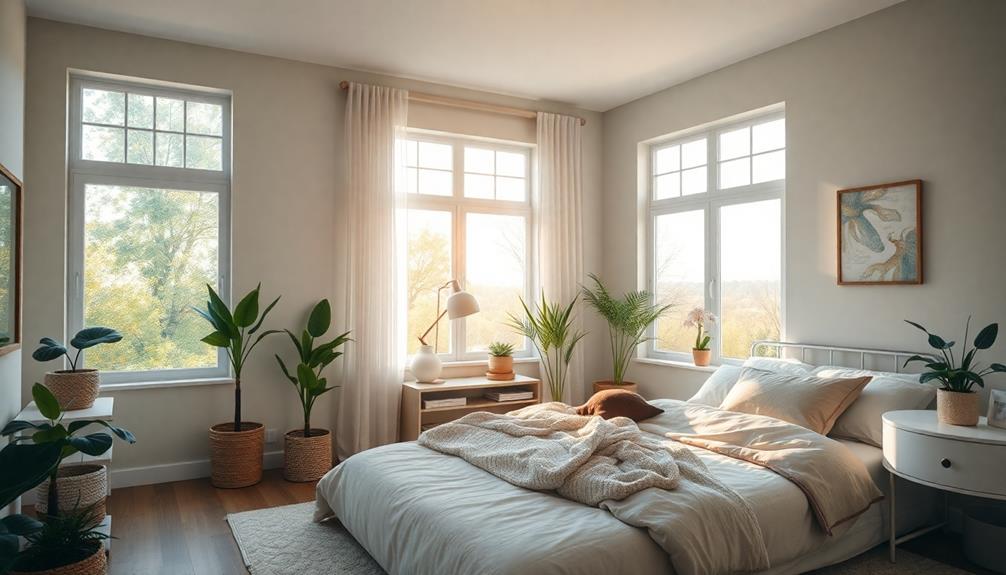Renaissance furniture showcases a stunning blend of artistry and practicality. Originating in Italy from the 14th to 17th centuries, it reflects the wealth and status of its owners. You'll notice rich carvings, intricate designs, and luxurious materials like walnut and oak. Each piece embodies exceptional craftsmanship, employing traditional woodworking techniques that highlight skill and precision. Ornate motifs and natural elements tell stories of myth and history, seamlessly integrating beauty and function. This iconic style has even influenced modern design, emphasizing quality and intricate details. To uncover more about its fascinating evolution and impact, just keep exploring!
Key Takeaways
- Renaissance furniture emerged as symbols of wealth and status, reflecting the cultural rebirth from the 14th to 17th centuries in Italy.
- Characterized by rich carvings, intricate detailing, and the use of opulent materials like walnut and oak, enhancing aesthetics and durability.
- High-quality craftsmanship features traditional woodworking techniques, precise joinery, and elaborate gilding, showcasing the artistry of the Renaissance era.
- Ornate designs often incorporate mythological and historical motifs, emphasizing societal beliefs and virtues prevalent during the Renaissance.
- Modern furniture continues to draw inspiration from Renaissance styles, emphasizing luxury, intricate workmanship, and classical elements in contemporary designs.
Historical Context of Renaissance Furniture
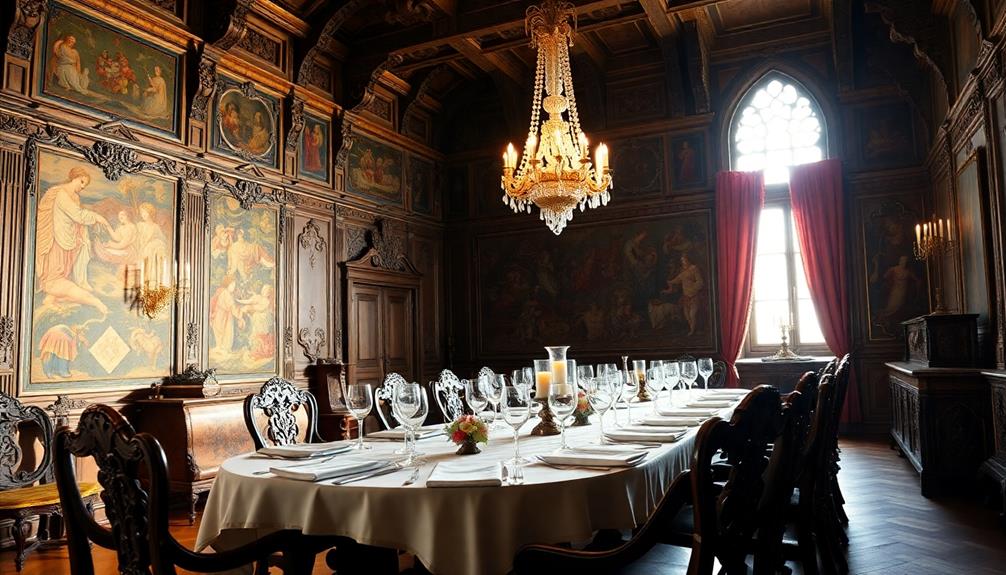
During the 14th to 17th centuries, Renaissance furniture emerged in Italy, marking a significant change in design and cultural expression. This period reflects a cultural rebirth, influenced heavily by classical ideals, and showcases the importance of nurturing an imaginative mindset in artistic endeavors.
As medieval styles evolved, furniture began to embody more sophisticated designs, showcasing a newfound appreciation for artistry and humanism, as seen in design thinking principles. This era established furniture not just as functional items, but as symbols of wealth and status.
You can see how the emphasis on craftsmanship and decorative elements mirrors the broader societal changes. With artists and artisans embracing classical themes, Renaissance furniture became a canvas for personal expression, connecting the practical with the aesthetic and elevating everyday objects into significant cultural artifacts.
Characteristics of Renaissance Style
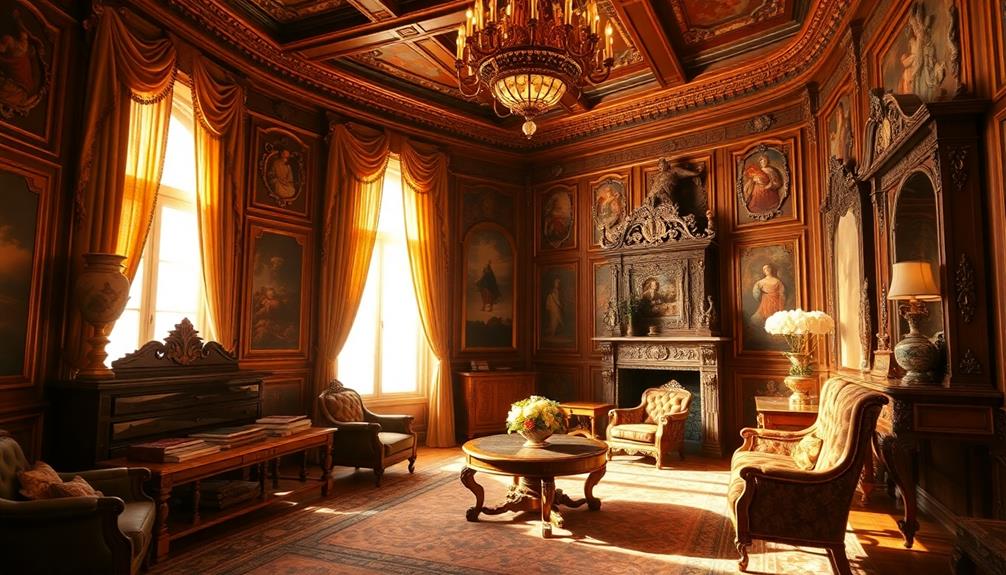
Renaissance style furniture is characterized by its rich carvings and intricate detailing that immediately draw your attention.
You'll notice the use of opulent materials like walnut, oak, and exotic woods, which add a luxurious touch to each piece. The architectural influences are evident in the furniture forms, showcasing a balance of symmetry and proportion in their design elements.
This style often incorporates elements reminiscent of modern farmhouse decor trends, such as natural materials and vintage pieces. You might find elaborate motifs and embellishments that reflect the era's artistic ideals.
Textiles also play a significant role, with sumptuous fabrics enhancing the overall aesthetic. This style boldly blends functionality with artistic expression, making each item a statement piece in any setting.
Craftsmanship and Techniques
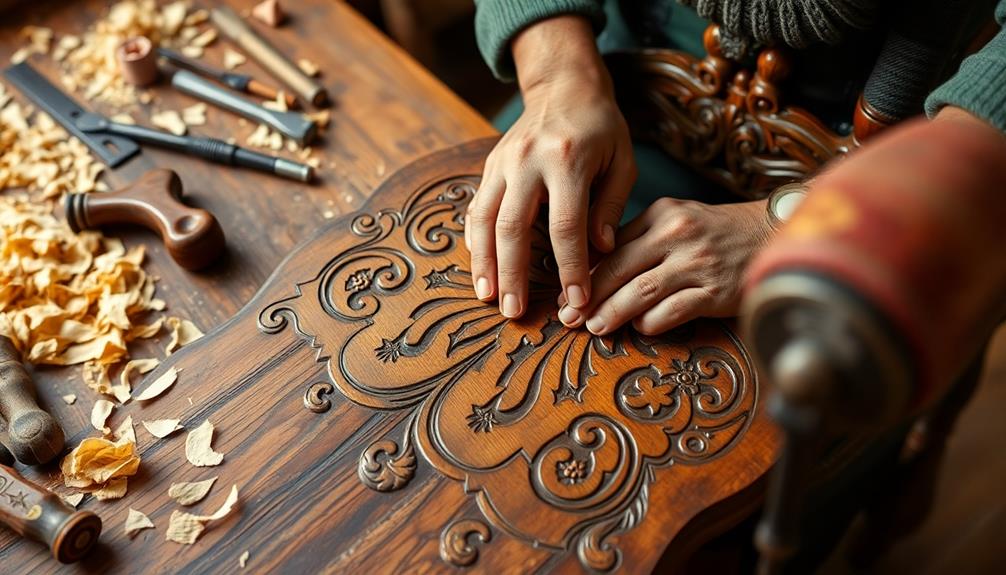
In the domain of Renaissance furniture, craftsmanship and techniques are paramount, showcasing the skill and artistry of the period's artisans.
You'll notice that each piece reflects a high level of craftsmanship, with traditional woodworking techniques and precise joinery methods at play. Artisans employed gilding and intricate inlay work to enhance the opulence of their creations.
Carving techniques varied, featuring relief, deep carving, and intaglio, all designed to bring life to the wood. You can appreciate how these masterful artisans devoted time and care to every detail, highlighting not just their technical skills, but also their artistic vision.
Each item you encounter stands as a reflection of the cultural richness of the Renaissance, merging functionality with exquisite artistry.
Themes and Motifs
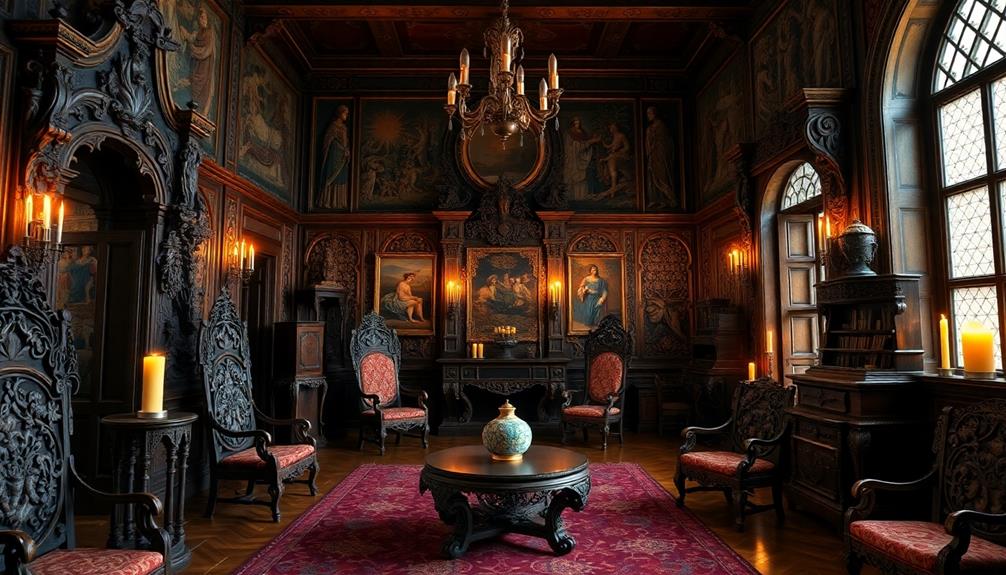
Artisans didn't just focus on craftsmanship; they also infused their creations with rich themes and motifs that reflect the values and beliefs of their time.
You'll notice ornate carvings depicting mythological and historical subjects, which convey deeper narratives. Additionally, just as the intricate designs in Renaissance furniture symbolize status and belief, the use of essential oils for toothache relief highlights the importance of health and wellness during the era.
Allegorical representations often highlight societal values, illustrating the importance of virtue and power. Natural motifs, like flora and fauna, are seamlessly integrated into designs, bringing the beauty of the outside world indoors.
Geometric patterns enhance the aesthetic appeal, providing balance and harmony. Each piece of furniture serves not just a functional purpose but also as a symbol of status and belief, embodying the spirit of the Renaissance.
These themes and motifs make Renaissance furniture an enchanting blend of art and culture.
Influence on Modern Design
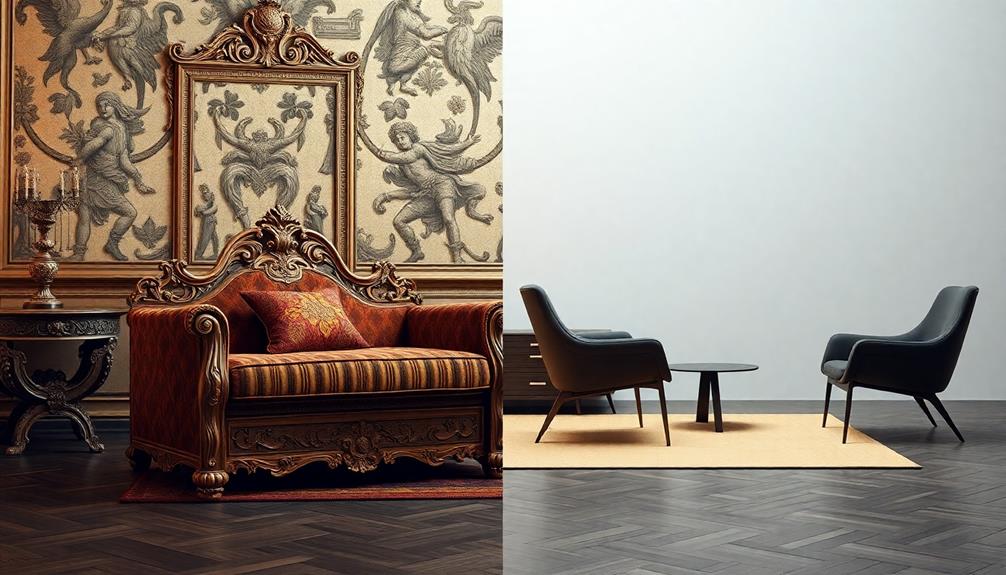
The influence of Renaissance furniture on modern design is unmistakable, as many contemporary pieces draw inspiration from the rich craftsmanship and ornate detailing of that era. You'll notice that today's designs often revive classical elements, focusing on quality materials and intricate workmanship. This admiration for the past translates into luxury furniture that emphasizes elaborate carvings and symmetrical forms.
| Feature | Renaissance Style | Modern Interpretation |
|---|---|---|
| Craftsmanship | Intricate carving | High-quality materials |
| Materials | Walnut, oak | Sustainable woods |
| Detailing | Ornate designs | Minimalist accents |
| Symmetry | Balanced forms | Asymmetrical designs |
| Motifs | Historical themes | Abstract representations |
Frequently Asked Questions
What Are the Most Famous Pieces of Renaissance Furniture?
You'll find that iconic pieces like the cassone, a beautifully carved chest, and the credenza, known for its intricate designs, represent the pinnacle of Renaissance furniture. They showcase artistry and craftsmanship that defined the era.
How Did Renaissance Furniture Differ Across European Countries?
You'd think all Renaissance furniture's the same, right? Wrong! In France, elegance reigns, while Italy flaunts boldness. England's all about sturdiness, and Spain loves intricate designs. Each country's got its unique flair, don't you agree?
Where Can I Buy Authentic Renaissance-Style Furniture Today?
You can find authentic Renaissance-style furniture at specialized antique shops, reputable online marketplaces, or auctions. Consider visiting high-end furniture galleries or estate sales for unique pieces that capture the era's craftsmanship and elegance.
What Are Common Restoration Techniques for Renaissance Furniture?
When breathing new life into Renaissance furniture, you'll find techniques like careful refinishing, gentle reupholstering, and skillful wood repair essential. These methods not only preserve its charm but also guarantee it shines for generations to come.
How Can I Identify a Genuine Renaissance Furniture Piece?
To identify a genuine Renaissance furniture piece, look for intricate carvings, rich materials like walnut, and signs of craftsmanship. Check for symmetry and proportion, and examine any historical motifs or allegorical designs that reflect the era's artistry.
Conclusion
As you wrap up your exploration of Renaissance furniture, you can't help but feel the weight of history in each exquisite piece. These masterworks, with their intricate carvings and luxurious materials, not only defined an era but also continue to inspire modern design in ways that seem almost magical. Embracing the essence of this artistic revolution, you now appreciate how the beauty of Renaissance furniture transcends time, leaving an indelible mark on art and interior decor that feels larger than life.




